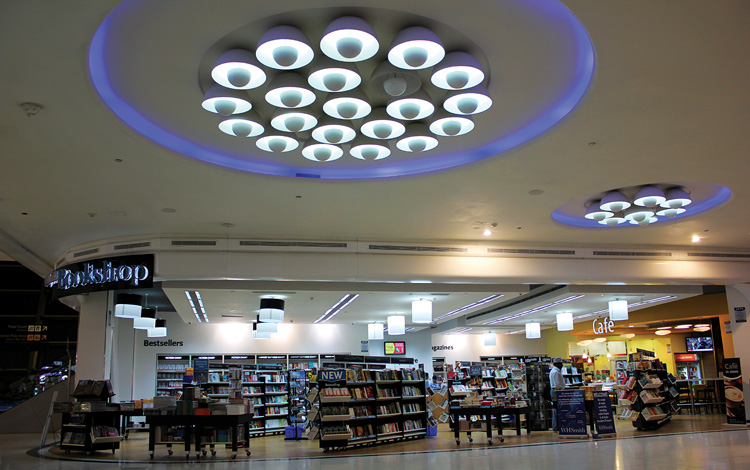Revisit PPP Model for Airports
The mandatory 10 years review time has arrived and there are good reasons to thoroughly review the Master Plans at the Delhi International Airport Limited and Mumbai International Airport Limited on a case to case basis, to ensure success of MoCA’s ambitious plans on regional connectivity scheme as stated in the draft National Civil Aviation Policy.

In the year 2006, the two busiest airports in India were restructured through the joint venture route for modernisation and development. The Operation, Management and Development Agreement (OMDA), as approved by the then Union Cabinet was signed between the Airports Authority of India (AAI) with the major partner in the joint venture company (JVC).
OMDA, in para 8.3.5, provides for submission of the initial Master Plan by JVC, within six months of execution of the OMDA, through AAI for its review and comments by the Ministry of Civil Aviation (MoCA). OMDA further states, in the same para, that the Master Plan must be updated and resubmitted to the AAI for its information and to the MoCA for its review and comments periodically, every ten years. There is even a mention of more frequent updates at shorter intervals based on traffic growth or any other reasonable cause. The mandatory 10-years review time has arrived and there are good reasons to thoroughly review the master plans at the Delhi International Airport Limited (DIAL) and the Mumbai International Airport Limited (MIAL) on a case to case basis, to ensure success of MoCA’s ambitious plans on Regional Connectivity Scheme (RCS), as stated in the draft National Civil Aviation Policy (NCAP 2015).
Importance of DIAL & MIAL for RCS & GA/BA
The MoCA plans to promote growth of Scheduled Commuter Airlines (SCA) for efficient regional connectivity. Though metro to metro flights won’t be part of the RCS, metro to any designated regional/remote destination would be operated by SCA to meet its obligation as regional/remote airline. Growth of passenger traffic at DIAL and MIAL being the highest during the last ten years, it is natural to expect many RCS flights to originate from Delhi or Mumbai. Further, Delhi being the national capital and Mumbai the commercial capital, General Aviation/Business Aviation (GA/BA) flights would operate in greater numbers in the coming years from DIAL and MIAL, given the projected economic growth figures of India as being the highest amongst large economies. Therefore, the 10-year review of Master Plan, due now, for DIAL and MIAL, should pragmatically consider providing for focused development of infrastructure for RCS and GA/BA at both these major metros. However, there is a need to carefully consider the availability of land and prevailing circumstances separately at these airports.

Development of RCS & GA/BA infrastructure at DIAL
In the coming years, DIAL should be able to provide adequate infrastructure for the expected number of RCS and GA/BA flights. While it important to optimally use and develop all land resources in India, DIAL has adequate land for the projected growth of scheduled and nonscheduled traffic. The draft NCAP 2015 states that MoCA would coordinate with airport operators and AAI to ensure adequate space allocation at Indian airports for SCA. It is hoped that the Master Plan review of DIAL would be closely scrutinised by MoCA and AAI to ensure that development of infrastructural requirements for RCS and GA/BA are duly taken care of in a pragmatic and costeffective manner.
We need to ensure OMDAs remain aligned with the stated purpose and spirit behind PPP model in infrastructure sector for ensuring optimal growth of aviation industry as a whole
Infrastructure for RCS & GA/BA at MIAL
Contrary to existing adequacy of land at Delhi, MIAL’s constraints on land availability are well known. At the time of signing the OMDA in 2006, the alternate international airport at Navi Mumbai was expected to come up by 2017. However, this second major airport near Mumbai is still a distant dream. Therefore, it is important that the existing scarce land at MIAL is optimally and flexibly utilised to ensure that reasonable infrastructure is available for RCS and GA/BA operations. MoCA and AAI need to scrutinize MIAL’s existing Master Plan to further reduce the already grossly inadequate infrastructure for GA/BA there. While there would be challenges ahead at Mumbai till Navi Mumbai comes up, all the stakeholders need to aim at revising the Master Plan at MIAL in a transparent and business-like manner.
The Way Forward
The Kelkar Committee report on revisiting and revitalising the public-private partnership (PPP) model for infrastructure projects rightly pitches for pragmatism, transparency and a business-like approach for all the stakeholders. The idea that PPP contracts, like OMDA, must focus on service delivery rather than fiscal benefits and, further that we need improved fiscal reporting practices, is spot on.
In tandem, we need better monitoring and constant review of the projects to ensure these achieve the real purpose conceived behind PPP model. The Kelkar Committee also noted that airports have garnered much PPP resources and suggested a unified regulatory structure for the sector notified. Specifically in aviation sector, it is important to clearly distinguish between all aeronautical and non-aeronautical services.
The OMDAs of DIAL and MIAL, drafted for the first time for airports, caused some unnecessary and unexplained confusion in private airport operators’ mind on difference between aeronautical and non-aeronautical services at the airport. However, the subsequently enacted Airport Economic Regulatory Act (AERA) in 2008 has clearly defined the aeronautical services at an airport. The 10-year review is the right time for the government to, once for all, remove this confusion, especially for hangars ‘used for carrying out maintenance operations to ensure continuous airworthiness of the aircraft’ by the operators and ‘ground handling’ (GH) services, in accordance with provisions at para 2(vii) of AERA Act. We need to ensure OMDAs remain aligned with the stated purpose and spirit behind PPP model in infrastructure sector for ensuring optimal growth of aviation industry as a whole.





